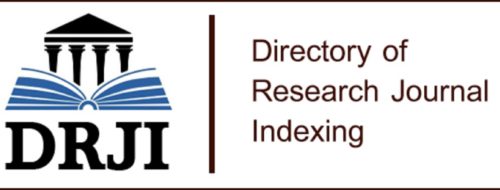CASSAVA (Manihot esculenta Crantz): A REVIEW OF THE USE OF BIOFERTILIZERS AND THEIR IMPACT ON SUSTAINABLE AGRICULTURE IN ECUADOR
Keywords:
Cassava, arbuscular mycorrhizal fungi, biofertilizers, sustainable agriculture, Ecuador, ManabíAbstract
DOI: https://doi.org/10.46296/ig.v8i15.0243
The cultivation of cassava (Manihot esculenta Crantz) is essential for food security and rural economy in Ecuador, especially in the coastal region and the province of Manabí. However, current yields are far below their potential due to factors such as low soil fertility and limited use of sustainable technologies. This article reviews the impact of arbuscular mycorrhizal fungi (AMF) as biofertilizers in cassava cultivation, highlighting the benefits in terms of yield increase, reduced chemical fertilizer use, environmental and economic advantages, and applicability in Manabí. AMF have proven to be effective tools for optimizing nutrient uptake, restoring degraded soils, and reducing the carbon footprint in tropical agricultural systems. The implementation of AMF in Ecuador represents a viable strategy to promote more competitive and sustainable agriculture.
Keywords: Cassava, arbuscular mycorrhizal fungi, biofertilizers, sustainable agriculture, Ecuador, Manabí.
References
Carpio, C. P. (2022). Ecuadorian food: Muchines de yuca. Recuperado de https://visitecuadorandsouthamerica.com/en/ecuadorian-food-muchines-de-yuca/
Carreón Abud, Y. (2017). Beneficios de los hongos micorrícicos arbusculares en la agricultura. Saber Más. Recuperado de https://www.sabermas.umich.mx/archivo/articulos/90-numero-12/178-beneficios-de-los-hongos-micorricicos-arbusculares-en-la-agricultura.html
Ceballos, I., Ruiz, M., Fernández, C., Peña, R., Rodríguez, A., Sanders, I. R., & Ferrol, N. (2013). The in vitro mass-produced model arbuscular mycorrhizal fungus Rhizophagus irregularis significantly increases yields of the globally important food security crop cassava. PLoS ONE, 8(8), e70633. https://doi.org/10.1371/journal.pone.0070633
De Bauw, P., Sanginga, N., Tondoh, J. E., & Merckx, R. (2021). Arbuscular mycorrhizal fungi improve soil structure and nutrient retention in degraded tropical soils. Soil Biology and Biochemistry, 155, 108180. https://doi.org/10.1016/j.soilbio.2021.108180
Dodd, J. C., Arias, I., Koomen, I., & Hayman, D. S. (1990). The management of populations of vesicular-arbuscular mycorrhizal fungi in acid-infertile soils of a savanna ecosystem. Plant and Soil, 122(2), 229–240. https://doi.org/10.1007/BF02851973
FAO. (2019). Cassava: A global perspective. Food and Agriculture Organization of the United Nations. https://doi.org/10.4060/ca7348en
Hernández, A., González, J., & Pérez, N. (2012). La efectividad del biofertilizante EcoMic® en el cultivo de la yuca. Cultivos Tropicales, 33(1), 5–10. Recuperado de https://www.scielo.sld.cu
Hernández-Acosta, E., Banuelos, J., & Trejo-Aguilar, D. (2021). Revisión: Distribución y efecto de los hongos micorrízicos en el agroecosistema de café. Revista de Biología Tropical, 69(2), 445–460. https://doi.org/10.15517/rbt.v69i2.44812
Instituto Nacional de Investigaciones Agropecuarias. (2020). Cuarta llamada práctica del cultivo de yuca se desarrolla en la provincia de Manabí. Recuperado de https://www.iniap.gob.ec/cuarta-llamada-practica-del-cultivo-de-yuca-se-desarrolla-en-la-provincia-de-manabi/
Instituto Nacional de Investigaciones Agropecuarias. (2020). La yuca, uno de los rubros más importantes para la soberanía alimentaria. Recuperado de https://www.iniap.gob.ec/la-yuca-uno-de-los-rubros-mas-importante-para-la-soberania-alimentaria/
Instituto Nacional de Investigaciones Agropecuarias. (2020). Yuca y camote. Recuperado de https://www.iniap.gob.ec/yuca-y-camote/
Kang, B. T., & Osiname, O. A. (1980). Nutrient requirements of cassava. International Institute of Tropical Agriculture. Recuperado de https://www.iita.org
Medina, A., Azcón, R., & Barea, J. M. (2012). Interacción de hongos micorrízicos arbusculares y fertilización en el crecimiento de yuca. Revista Mexicana de Ciencias Agrícolas, 3(2), 315–328. Recuperado de https://www.scielo.org.mx
Peña Venegas, C. P., Herrera, M. A., Bonfante, P., & Andrade, G. (2021). Phosphorus efficiency and arbuscular mycorrhizal fungi: A sustainable approach for cassava cultivation in phosphorus-poor soils. Agriculture, Ecosystems & Environment, 319, 107554. https://doi.org/10.1016/j.agee.2021.107554
Rodríguez, C., Sánchez, F., & Pérez, Y. (2018). Biofertilización con hongos formadores de micorrizas arbusculares en yuca. Boletín de Ciencias Agropecuarias, 16(2), 15–25. Recuperado de https://www.scielo.org.co
Sarr, A., Niang, A., Ndoye, I., & Gueye, M. (2019). Diversity of arbuscular mycorrhizal fungi in cassava cultivation systems in Cameroon. Journal of Plant Nutrition, 42(15), 1752–1764. https://doi.org/10.1080/01904167.2019.1625779
Séry, D. J., Kouadio, J. P. E. N., Kouamé, F. N., Gnahoua, G. M., Kouadio, K. K. H., & Fofana, I. (2016). Native arbuscular mycorrhizal fungi improve cassava (Manihot esculenta Crantz) growth and tolerance to drought stress. African Journal of Biotechnology, 15(31), 1675–1684. https://doi.org/10.5897/AJB2016.15440
Suparno, S., Pratiwi, A. E., & Marpaung, B. O. (2023). Colonization of arbuscular mycorrhizal fungi in cassava cultivated in acidic soils of Manokwari, Indonesia. Mycorrhiza, 33(1), 15–24. https://doi.org/10.1007/s00572-022-01080-4
Published
How to Cite
Issue
Section
License
Copyright (c) 2025 Scientific Journal INGENIAR: Engineering, Technology and Research

This work is licensed under a Creative Commons Attribution-NonCommercial-ShareAlike 4.0 International License.

















